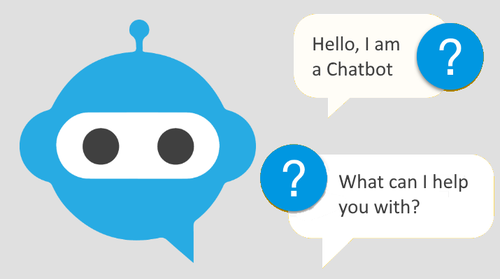Healthcare Chatbot Funnel
by Anthony Y. 09/14/2020
Many healthcare providers compete for patients and employ extensive marketing strategies to achieve their goal. The goal typically is to convert someone to a customer, which usually means making an appointment with this patient. Making an appointment or selling a product or service are considered “direct conversions” whereas collecting the email or phone number for follow-up communication is considered “lead collection.”
Aside from the typical contact us form or schedule appointment page on your website, there are many more ways to improve your healthcare office’s funnel to acquire more patients.
A typical healthcare office simply depends on a website visitor filling out a form or calling the office, and simply use email and SMS for retargeting/remarketing. Scroll down to see how a chatbot can improve customer engagement and increase conversions.
Healthcare Chatbots
Traditional healthcare marketing involves advertising the provider in digital (or print) media, where the phone number and website are listed. However, In the last few years, AI has disrupted most industries including healthcare marketing. Specifically, providers have been adding chatbots on their web sites (and sometimes on their Facebook pages) to offer a more interactive experience to the patients who are looking for instant information and transactions.
Is your healthcare office taking advantage of chatbots on its website? Chatbots add an extra way to engage with potential patients as soon as they land on your site. AI Healthcare chatbots makes it easy to engage and figure out your visitor’s problem with natural processing language to help screen and convert the visitor into a patient.
These bots typically collect information on leads (potential customers/patients), then give them some information on a practice’s services or make an appointment. Such bots are more popular in out-of-pocket specialties, such as dentists, chiropractors, plastic surgeons or physical therapy, which are the specialties that invest more in marketing.
*We provide Chatbot Templates for Doctor’s Offices, Chiropractors, Dentists + More
A key intuition here is that as patients search for services on Google, if a practice’s website has a chatbot that can engage the patient 24x7, it will make it more likely to attract this patient, especially in the case of millenials, where instant gratification is key.
Adding a chatbot to a healthcare website is trickier than ecommerce or SaaS websites, as HIPAA-compliance is of critical importance. A HIPAA-compliant chatbot platform like SmartBot360 (focused on healthcare and HIPAA Compliance), makes it easier to quickly create and deploy a chatbot while maintaining HIPAA standards.
SmartBot360 makes it so that you can give website visitors instant information and appointment scheduling 24/7 without hiring an extra receptionist.
More Conversions with a Healthcare Chatbot
Let’s assume that your visitor comes from a reference, Google/Bing Search, Paid Ads, or directly.
The typical steps they can follow are to go through the website, fill out the contact form, or give the office a call, but since the important steps don’t always happen if the visitor misses something or is not fully convinced, having a HIPAA compliant chatbot is perfect to engage these visitors to bolster their trust in your website (and business) by giving them instant information and making appointments.
Practices have found that by adding a chatbot they can increase the number of patient conversions by about 20%. In many cases, the chatbot can be the connecting glue of a larger marketing pipeline as shown in the above picture.
It is possible to track the users that come from sources like paid Google or Facebook ads using Google Analytics and Facebook Pixel. However, one has to be careful not to violate HIPAA by sharing sensitive patient data with these services. One should have no expectation that Google Analytics or Facebook Pixel will protect their data, so if one decides to still use these services he/she is responsible to make sure that no PHI is directly or indirectly submitted to these services.
The way that SmartBot360 decided to walk this thin line, is to offer integration of its chatbots with Facebook Pixel and Google Analytics, but display clear warnings of the potential HIPAA implications of using them, both inside the SmartBot360 Management Dashboard (where the chatbots are created) and in the BAA.
SmartBot360 makes it easy to add a Facebook Pixel or Google Analytics so you can retarget these visitors as someone more engaged than a simple website visitor in the overall funnel. It typically enables an “interacted with chatbot” retargeting audience which is a very valuable, warm audience to retarget.
Having an AI chatbot also helps visitors get the exact information they need, while being more personable. We compiled stats from our clients that use SmartBot360, and on average, a visitor is 21% more likely to book an appointment, and 45% more likely to leave their contact information. So along with email or SMS remarketing, a healthcare chatbot enables a new “engaged with chatbot” audience which can help increase SMS, email, and overall Return On Advertising Spend (ROAS).
If the patient is not ready to commit to an appointment, the contact information of the lead is still valuable. SmartBot360 integrates with most popular CRM systems to create contacts and notify sales agents to follow-up. Another strategy is to have the chatbot automatically schedule follow-up chatbots to nurture the lead. For example, a dentist chatbot can schedule monthly chats to check the dental health of a patient.
Adding SmartBot360 is one way to increase engagement, amount of leads, and conversions. Try it FREE for 2 Weeks and see how a healthcare chatbot can engage your website visitors and increase overall revenue.


